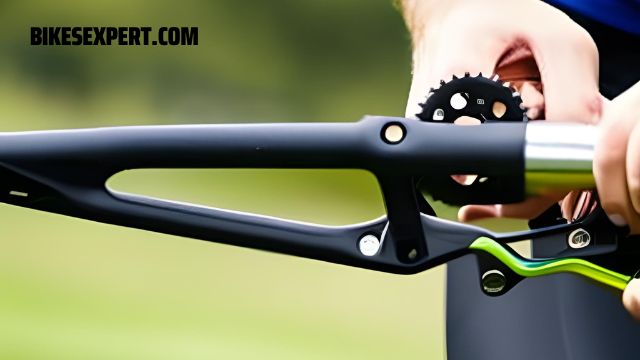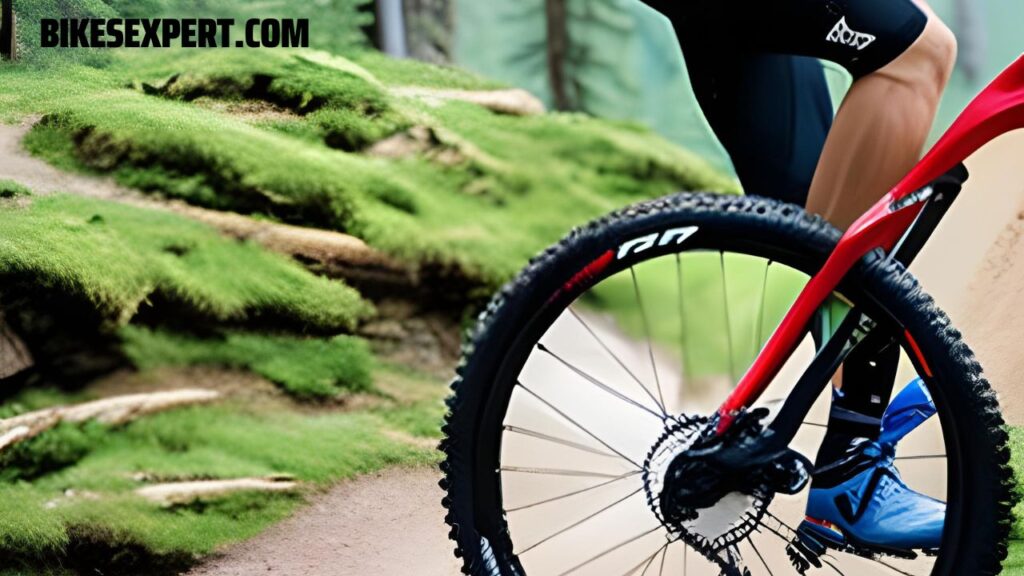Mountain bike disc brakes are a critical component in ensuring your safety and optimal performance on the trails.
Proper adjustment of these brakes can make a significant difference in your riding experience. In this blog post, we will discuss the importance of adjusting your disc brakes, the proper position for brake levers, tools required for adjustments, and step-by-step instructions on how to make these adjustments.
Additionally, we will address frequently asked questions related to mountain bike disc brake issues and solutions.
Read More: The 10 Best Mountain Bike Sunglasses: Protect Your Eyes On MTB Riding.
Why You Should Adjust Mountain Bike Disc Brakes?

Properly adjusting your mountain bike disc brakes is essential for several reasons, which contribute to your safety, performance, and overall riding experience. The following points highlight the importance of adjusting your disc brakes:
- Optimal braking performance:
When your disc brakes are correctly adjusted, they provide consistent and efficient braking power, allowing you to control your speed and navigate different types of terrain safely. Inadequate brake performance can result in longer stopping distances and compromised control, especially on steep descents or in wet conditions.
- Reduced wear on brake components:
Properly aligned brake pads and calipers minimize uneven wear on the brake components, including the pads and rotors. Uneven wear can lead to reduced braking performance over time, as well as increased maintenance and replacement costs.
- Prevention of potential accidents:
Poorly adjusted disc brakes can cause your wheels to lock up, skid, or lose traction, increasing the risk of accidents. By ensuring your brakes are adjusted correctly, you minimize these risks and create a safer riding environment.
- Noise reduction:
Disc brakes that are misaligned or rubbing against the rotor can produce annoying noises, such as squeaking, grinding, or scraping. Adjusting your brakes will help eliminate these noises, resulting in a more enjoyable and less distracting ride.
- Early detection of issues:
Regularly adjusting and inspecting your disc brakes allows you to identify potential problems, such as worn or contaminated brake pads, bent rotors, or loose components. Early detection and timely intervention can prevent more significant issues and reduce the risk of brake failure during a ride.
- Improved bike handling and control:
When your disc brakes are adjusted correctly, they contribute to better bike handling and control, particularly during technical descents or high-speed cornering. Proper brake adjustments ensure that your brakes provide predictable and reliable performance, enhancing your confidence and ability to navigate challenging terrain.
What Tools You Need to Adjust Mountain Bike Disc Brakes?

Before you start adjusting your disc brakes, make sure you have the necessary tools. These include:
- Allen wrenches (typically 4mm, 5mm, and 6mm)
- Torque wrench (optional but recommended)
- Clean cloth or rag
- Isopropyl alcohol (for cleaning purposes)
- Needle-nose pliers (if necessary)
HOW TO SECTION
- Step 1: Clean your brakes
First, make sure your bike’s disc brakes are clean. Use a clean cloth or rag and some rubbing alcohol to wipe the brake rotor and brake pads.
- Step 2: Loosen the bolts
Use the right size Allen wrench (usually 4mm, 5mm, or 6mm) to loosen the bolts that hold the brake caliper in place. Don’t remove them completely—just make them a little loose.
- Step 3: Line up the brake parts
Now, line up the brake caliper (the part with the brake pads) so that it’s right in the middle of the brake rotor (the round metal disc). Make sure there’s an equal gap between both brake pads and the rotor.
- Step 4: Secure the caliper
Hold the brake caliper in the correct position and tighten the bolts back up using your Allen wrench. Be careful not to overtighten them.
- Step 5: Adjust your brake levers
Check your brake levers on the handlebars. Make sure they’re at a comfortable angle (about 45 degrees) and easy to reach with your fingers. If you need to move them, loosen the bolt that holds the lever in place, adjust the position, and then tighten the bolt again.
- Step 6: Test your brakes
Before you start riding, give your brakes a test. Squeeze the levers and make sure they feel good and stop the bike properly. If something feels off, double-check the steps above and make any necessary adjustments.
What Is The Ideal Adjustment For Mountain Bikes?
The ideal adjustment for mountain bike disc brakes involves properly aligned brake pads, a centered caliper, and a comfortable brake lever position. This allows for consistent braking performance, minimal brake noise, and reduced wear on brake components.
Frequently Asked Questions:
Does Disc Brake Rub Slow You Down?
Yes, disc brake rub can slow you down and create unnecessary friction, leading to reduced efficiency and increased wear on brake components.
How Do You Adjust Disc Brakes On A Bike From Rubbing?
Follow the steps outlined in the HOW TO section above to adjust your disc brakes and eliminate rubbing.
Bike disc brakes scraping noise / mountain bike disc brake grinding noise / What is the scraping sound on my bike?
Scraping or grinding noises from your bike’s disc brakes can indicate misaligned brake pads, a bent rotor, or debris lodged between the pads and rotor. Cleaning and realigning the brake components should resolve the issue.
How Do You Fix Grinding Disc Brakes?
Address grinding disc brakes by cleaning the brake components, checking for bent rotors, and realigning the brake pads and caliper.
How Can I Make My Mountain Bike Disc Brakes Work Better?
Ensure optimal disc brake performance by keeping them clean, properly adjusted, and regularly inspecting for wear or damage. Replace worn or damaged components as needed.
Why Are My Disc Brakes Not Gripping?
Poor disc brake gripping can result from contaminated brake pads, glazed pads, or misaligned calipers. Cleaning or replacing the brake pads and aligning the caliper should improve grip.
Summary:
Adjusting your mountain bike disc brakes is crucial for optimal performance, safety, and braking efficiency. By understanding the importance of brake adjustments, the proper position for brake levers, and the necessary tools, you can maintain your mountain bike’s braking system effectively.
Following the step-by-step instructions provided in this blog post will help you align your brake components and eliminate issues such as rubbing, grinding, or poor gripping.
Finally, the frequently asked questions section covers common concerns and solutions for various disc brake problems. By regularly inspecting, adjusting, and maintaining your mountain bike disc brakes, you will ensure a safer and more enjoyable ride on the trails.
Learn More: MTB Maintenance: How To Fix Common Issues On The Trail?




